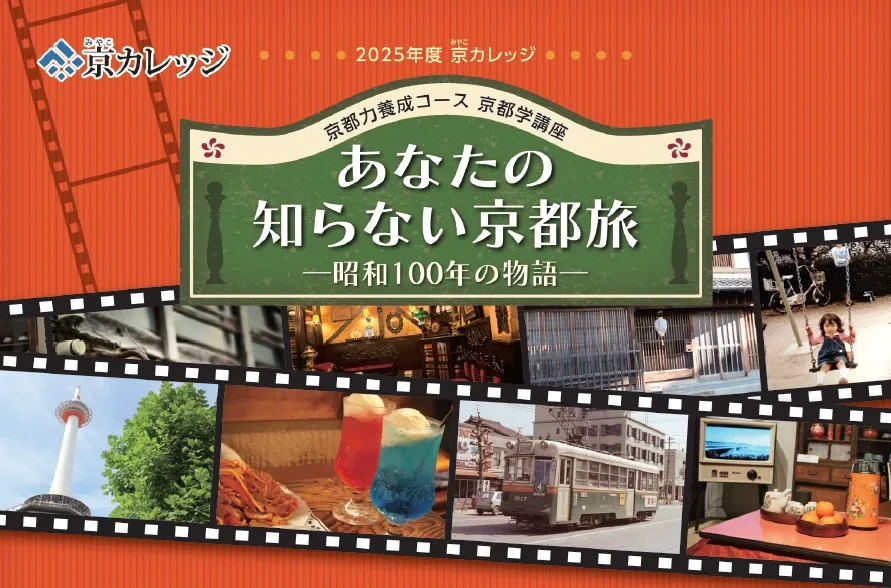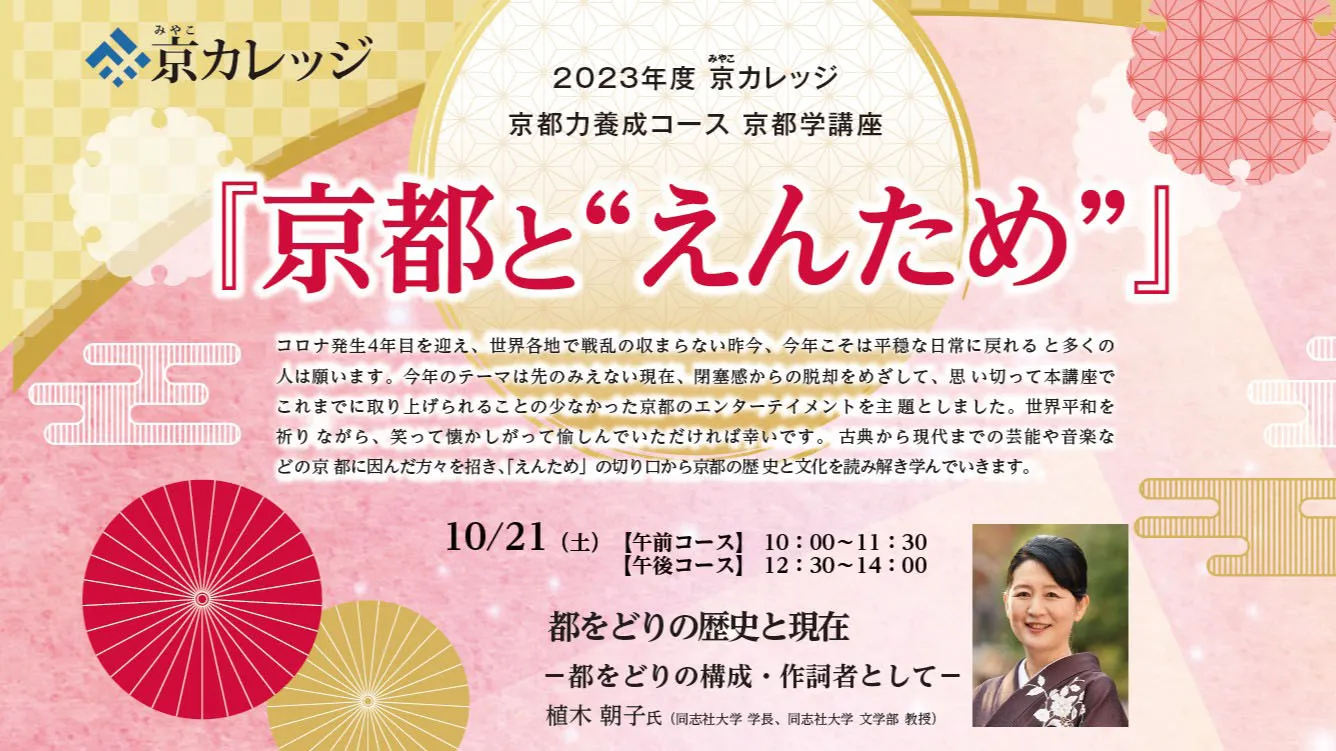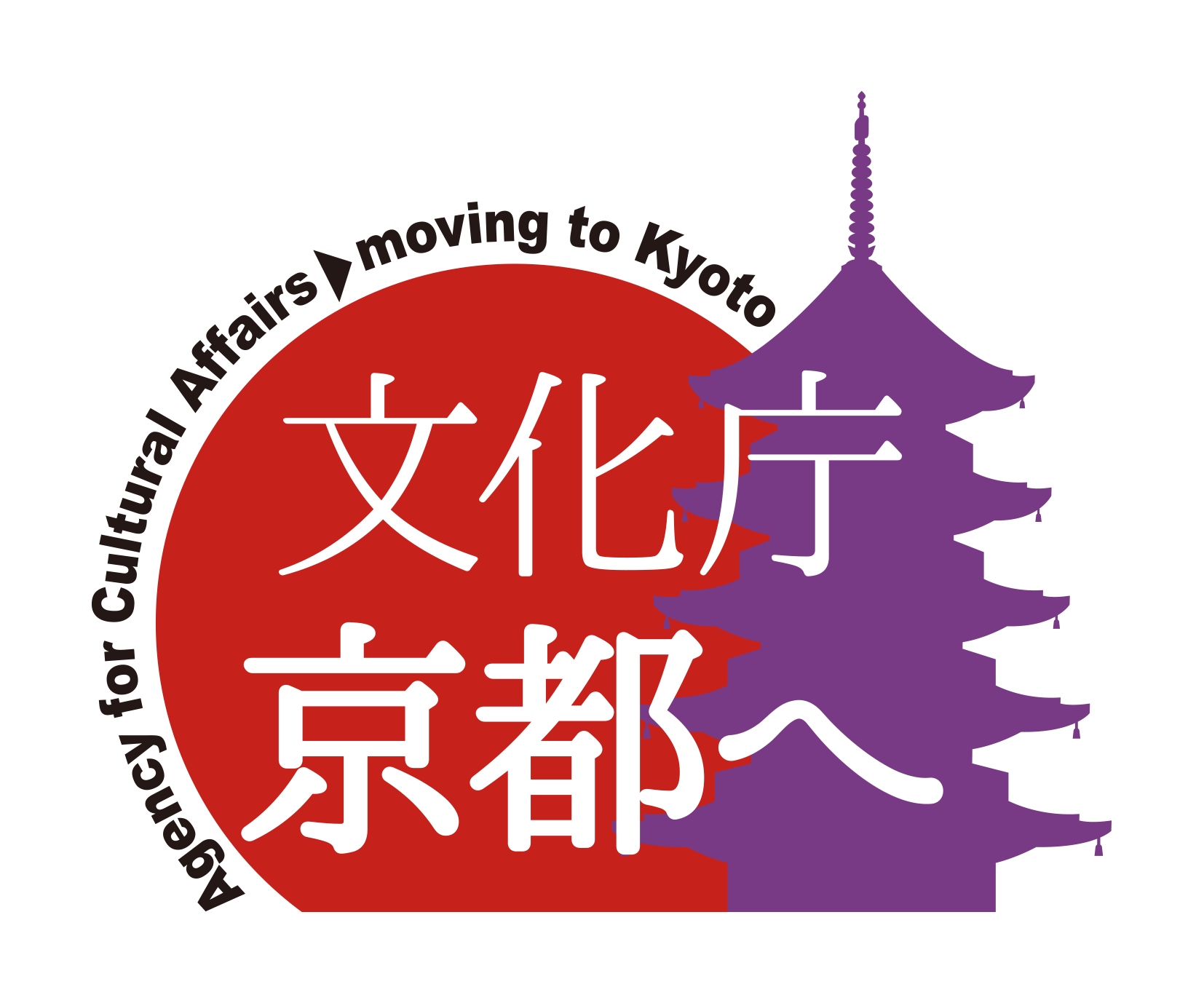Business Overview
The University Consortium Kyoto has been publishing the results of research on Kyoto studies as the “Kyoto Studies Lectures” at the “Plaza College” which opened in 2001. Since 2009, the Consortium has been selecting a theme each year from various Kyoto-related events as part of the Kyoto Power Cultivation Course at the “Kyoto (Miyako) College,” a lifelong learning initiative run jointly by the University and Kyoto City that opens up the university’s intellectual resources to the local community.
![]() Kyoto City Collaborative Project
Kyoto City Collaborative Project
Kyoto Studies Course 2025

Theme : “A journey through Kyoto you don’t know – A story from 100 years of Showa”- Overview
- The year 2025 (Reiwa 7) marks the 100th year of the Showa era. In 1926, the era name changed from Taisho to Showa, and in 1928 (Showa 3), the enthronement ceremony of Emperor Showa (Go-taiten) was held at the Kyoto Imperial Palace. Kyoto has also suffered major disasters, such as the great flood of 1935 (Showa 10) and the air raids of 1945 (Showa 20). Japan’s first streetcar and the dazzling Gion Festival have also undergone change during the Showa era. In addition to ancient traditions, Kyoto has also created its own new culture and art as an academic city since the postwar period.
Let’s look back on the past century of Kyoto together and think about what Kyoto will be like in the next century. - schedule
- April 26th (Sat) – December 13th (Sat), 2025
Each course will be held on Saturdays, with a capacity of 200 people. *If there are a large number of applications, a lottery will be held.
[Morning course] 10:00-11:30 (Registration begins at 9:30)
[Afternoon course] 13:00-14:30 (Registration begins at 12:30)
*Please choose either the morning or afternoon course.
The course content is the same for each course. - venue
- Campus Plaza Kyoto, 4th floor, Lecture Room 2 (Shimogyo-ku, Kyoto City, Nishinotoin-dori Shiokoji-sagaru)
- Tuition
- 10,000 yen (10 basic courses)
*A separate participation fee is required for the practical course. The application method will be notified to students after their enrollment is confirmed.
*Regular students (excluding graduate school and correspondence course students) of member schools of the University Consortium Kyoto and students enrolled in all courses at the Open University of Japan Kyoto Learning Center are free to attend the basic course. Please submit a copy of your student ID when applying. - About the application
- For more information, please refer to the “Kyoto College page.”
https://www.consortium.or.jp/project/sg/details - Contents
- University Consortium Kyoto Kyoto Power Development Course Kyoto Studies Leaflet [PDF]
On-demand lecture trial viewing
We are now offering on-demand viewing of some of the lectures given at the Kyoto University Consortium Kyoto College’s “Kyoto Studies Course.”

[Available courses]
Date: Saturday, October 21, 2023
Theme: “The History and Present of Miyako Odori – As the Composer and Lyricist of Miyako Odori”
Speaker: Asako Ueki (President of Doshisha University, Professor of the Faculty of Letters, Doshisha University)
<Summary>
Miyako Odori is a spring dance performed by geisha and maiko from Gion Kobu that began in 1872 (Meiji 5). Since 2014, I have been in charge of the composition and lyrics of Miyako Odori. In this course, I will trace the history of Miyako Odori and introduce the process that is currently being used to create the Miyako Odori stage. In particular, I would like to talk from the perspective of a composer about the rules and techniques used in composition, and what I keep in mind when writing lyrics.
For those who have already taken the course, we hope that this will allow you to review and deepen your learning, and for those who are considering taking the course or are undecided, we hope that we can provide you with a glimpse of what the course was like and the atmosphere it was like.
Please take advantage of this opportunity.
*If you would like to watch, please apply using the application form at the bottom of the page.
[Please be sure to check before applying]
After completing the application form, an email containing the video URL will be automatically sent to the email address you registered. Please follow the instructions in the automatically sent email to proceed with viewing.
・If you have not received an email after applying, please check the following:
*Make sure your settings allow you to receive emails from “@consortium.or.jp”
*Make sure the email has not been sorted into a junk, spam, or trash folder
If you have not received the email, please contact us at the address listed at the end of the page.
[About taking the course] You will watch videos using the video sharing service “YouTube”. You
can watch the videos at your own convenience during the video release period.
Participants will be responsible for any communication costs incurred when watching YouTube videos.
[Notes for taking the course]
(1) Taking photographs (including screenshots), recording, and secondary use of the materials of this course, as well as posting details on social media, are strictly prohibited. If plagiarism of the lecture content is discovered, it will be treated as an infringement of copyright and portrait rights.
(2) Please participate and watch using a PC (recommended), smartphone, or tablet. Mobile communications such as smartphones may require large amounts of data, which may result in high communication costs. Please be sure to check the details of your communication environment contract before using.
(3) The course will be open only to those who have applied. Please do not forward the URL to others.
Click here for the application form
Contact Information
Kyoto University Consortium, Kyoto College Office
1F Campus Plaza Kyoto, Nishinotoin-dori Shiokoji-sagaru, Shimogyo-ku, Kyoto 600-8216
TEL: 075-353-9140 FAX:
075-353-9121 E-mail: miyakare■consortium.or.jp (replace ■ with @ before sending)
*Inquiries accepted: Tuesday to Saturday 9:00-17:00 (excluding New Year holidays)
















